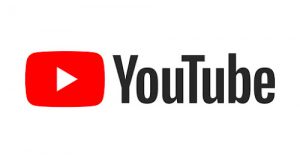YouTube’s new revenue-sharing model offers higher revenue for content creators
January 10, 2023632 views0 comments
By Chisom Nwatu
Content creators in Nigeria and worldwide will start earning more from YouTube as the platform announces the commencement of a new revenue-sharing model on Shorts which will take effect from February 1, 2023.
 YouTube, explaining the new model, said it would allocate revenue to monetizing Shorts creators based on their share of total Shorts views in the Creator Pool. It explained further that if a creator gets five per cent eligible views out of all Shorts uploaded by monetizing creators, they will then be allocated five per cent of the revenue in the creator pool. In addition, creators will get to keep 45 per cent of their allocated Shorts revenue.
YouTube, explaining the new model, said it would allocate revenue to monetizing Shorts creators based on their share of total Shorts views in the Creator Pool. It explained further that if a creator gets five per cent eligible views out of all Shorts uploaded by monetizing creators, they will then be allocated five per cent of the revenue in the creator pool. In addition, creators will get to keep 45 per cent of their allocated Shorts revenue.
According to YouTube, the new model, which allows creators to earn money from ads that are viewed between videos in the Shorts Feed, replaces the YouTube Shorts Fund.
The global online video sharing and social media platform added that the majority of its Shorts Fund recipients are expected to earn more with the new Shorts revenue-sharing model.
“To be eligible, monetizing partners will need to accept the Shorts Monetization Module – terms that let you earn from ads and YouTube Premium in the Shorts Feed. If you accept the Module after February 1, 2023, Shorts ad revenue sharing will apply to your channel’s eligible Shorts views starting on the date you accept. Shorts views accrued before accepting the Shorts Monetisation Module are not eligible for Shorts ad revenue sharing,” YouTube stated, highlighting the eligibility criteria for content creators to earn under the programme.
It added that all content monetising with ads must follow its advertiser-friendly content guidelines. It also noted that on Shorts, only views of content that follow its advertiser-friendly guidelines will be eligible for revenue sharing.
According to YouTube, ineligible Shorts views may occur with non-original Shorts, such as unedited clips from movies or TV shows, reuploading other creators’ content from YouTube or other platforms, or compilations with no original content added artificial or fake views of Shorts, such as from automated click or scroll bots, and views of Shorts that are inconsistent with its advertiser-friendly content guidelines.
YouTube therefore warned creators that ineligible views would not count when payments are calculated.
